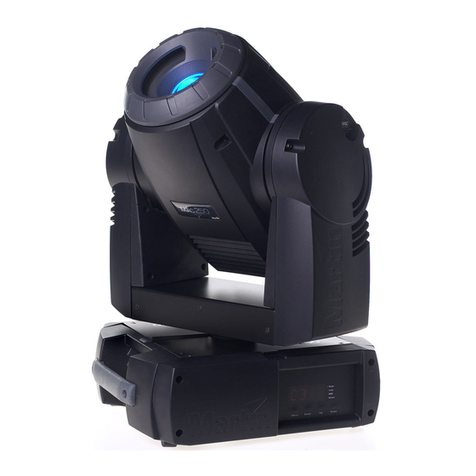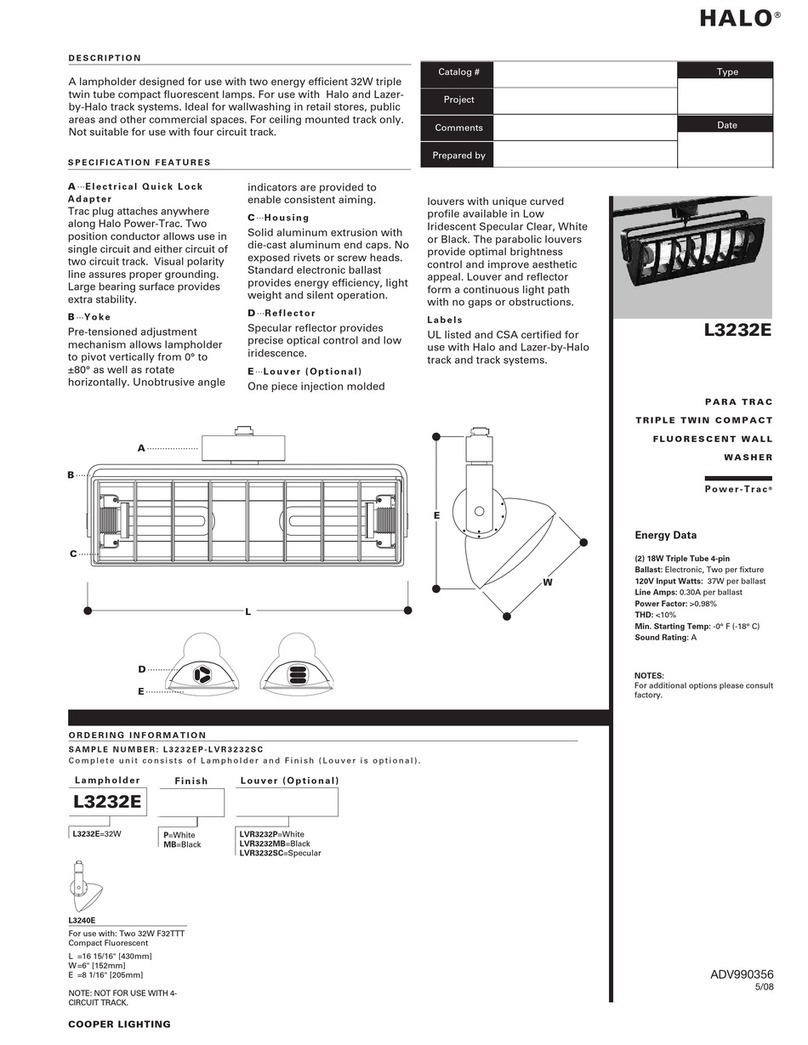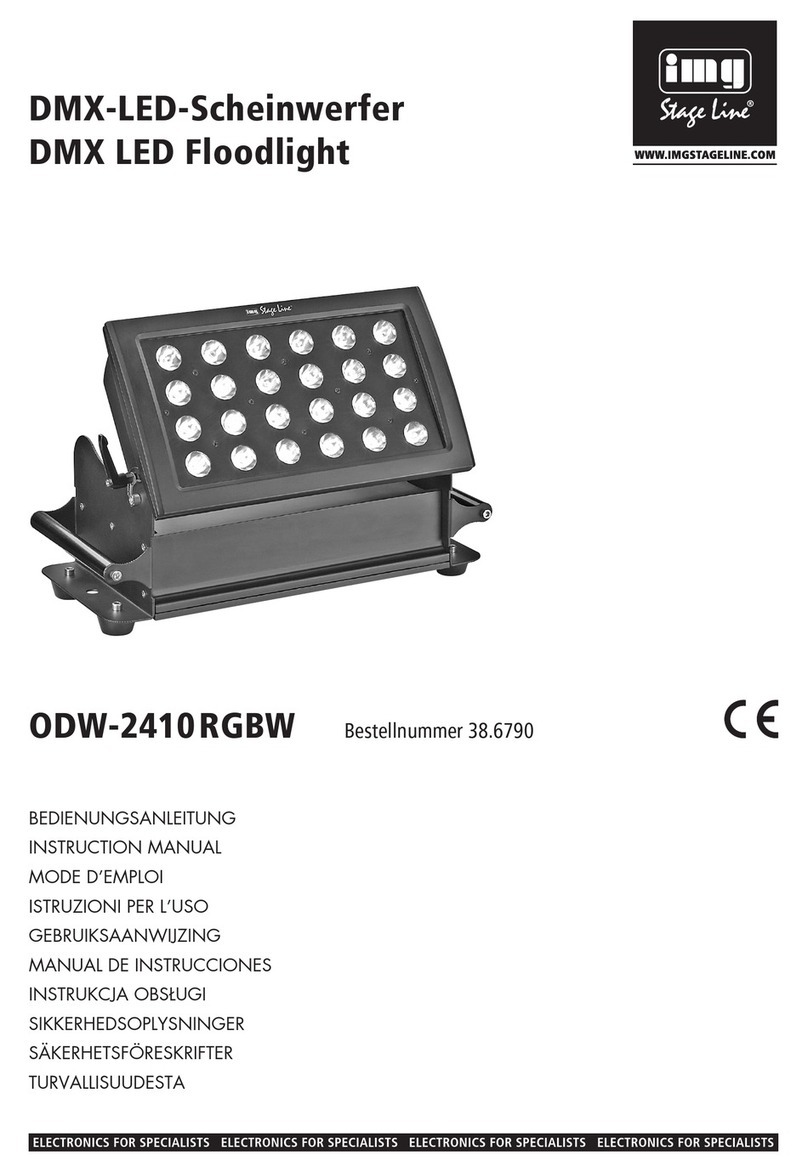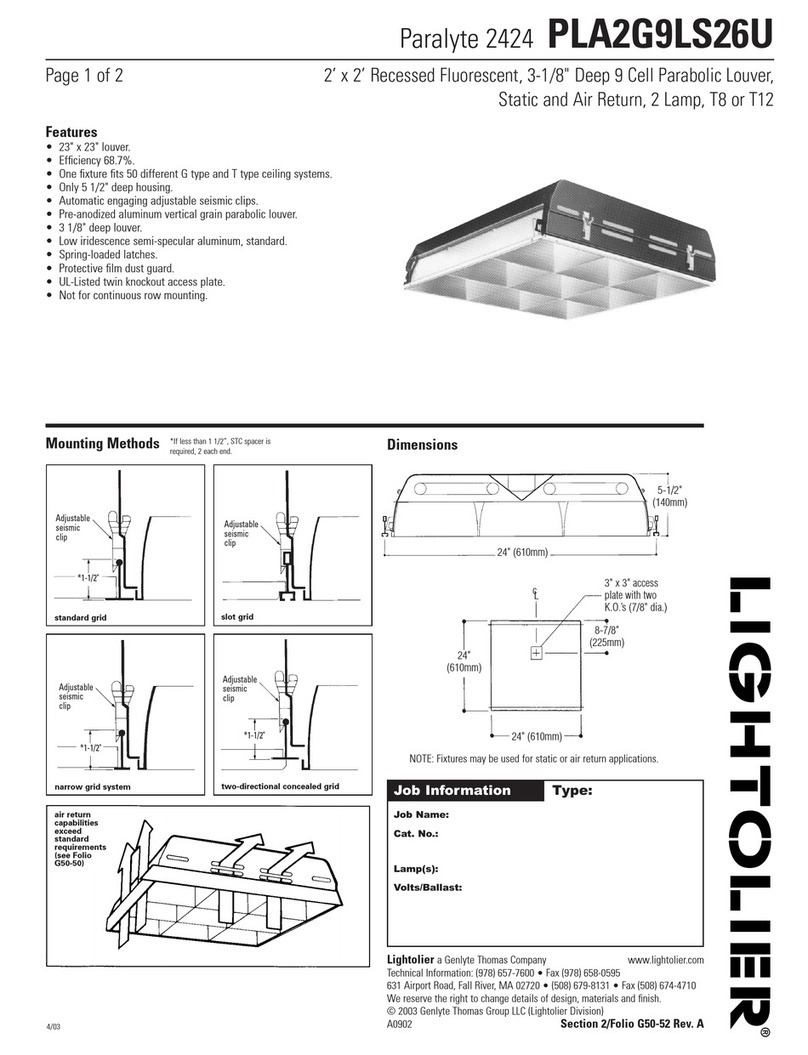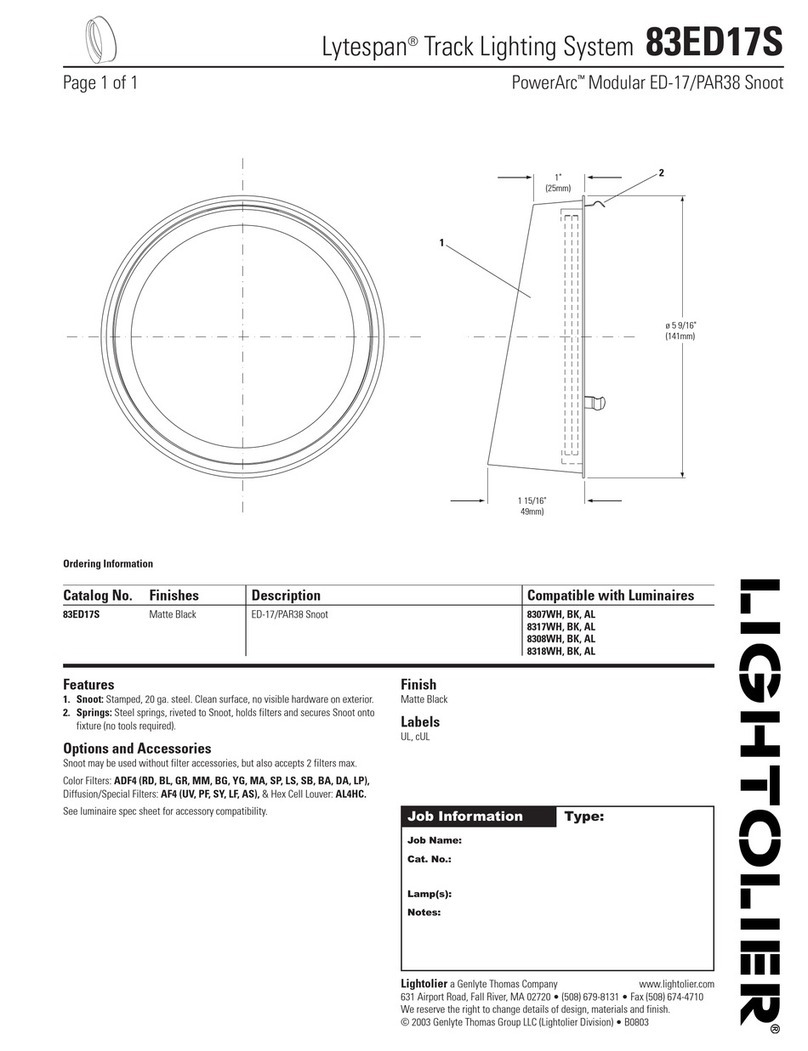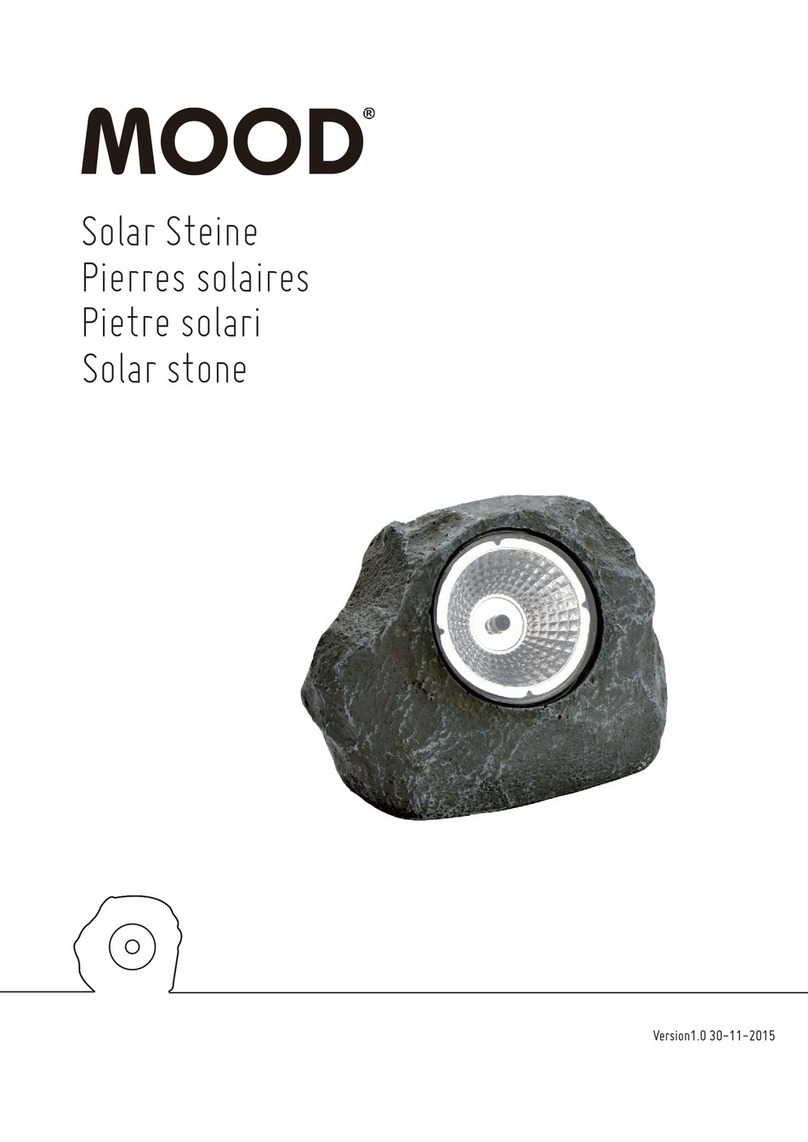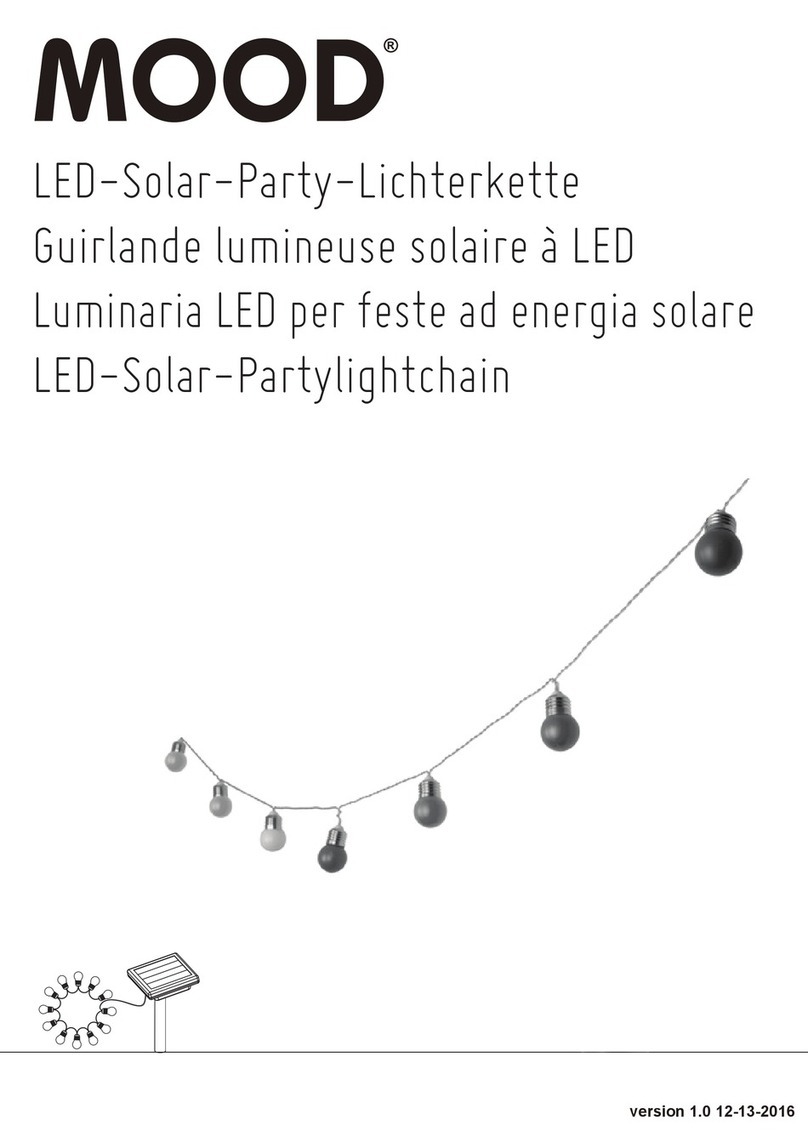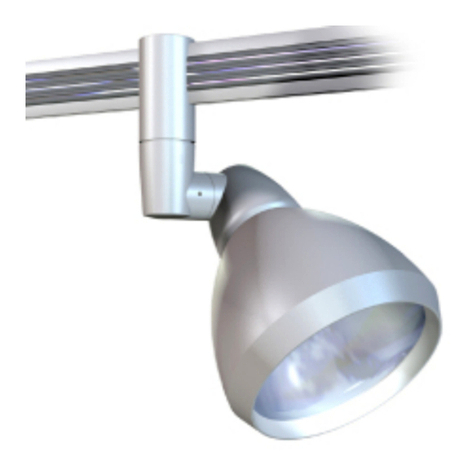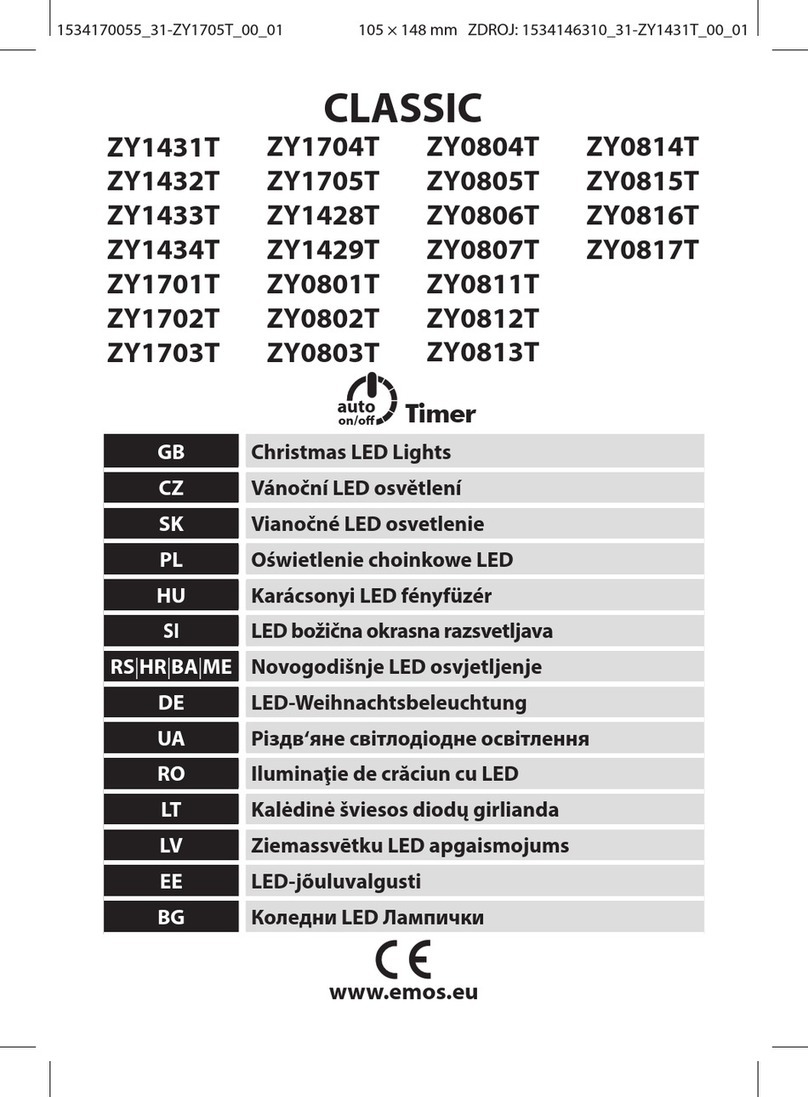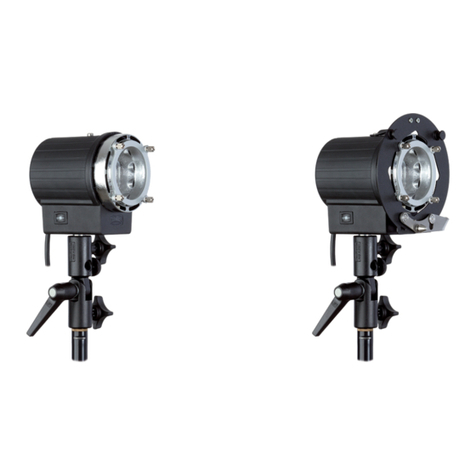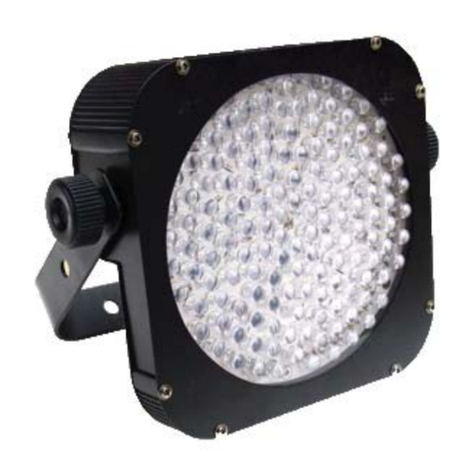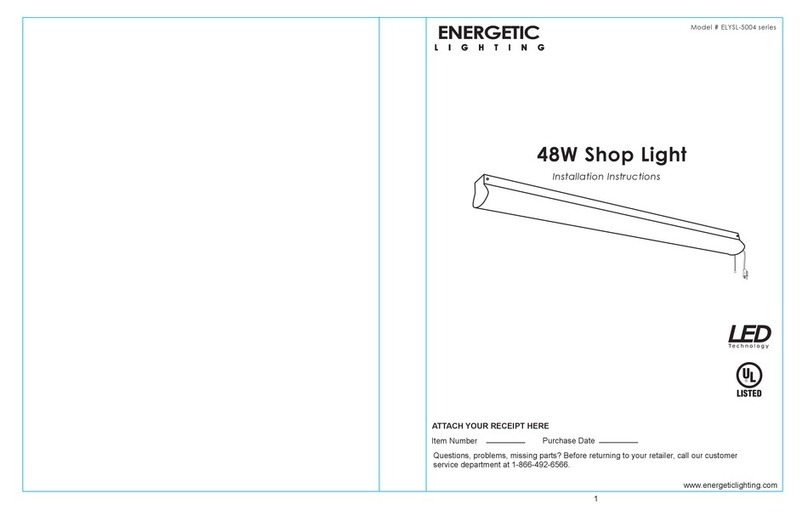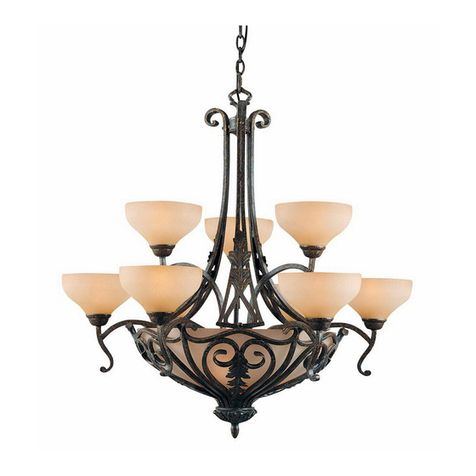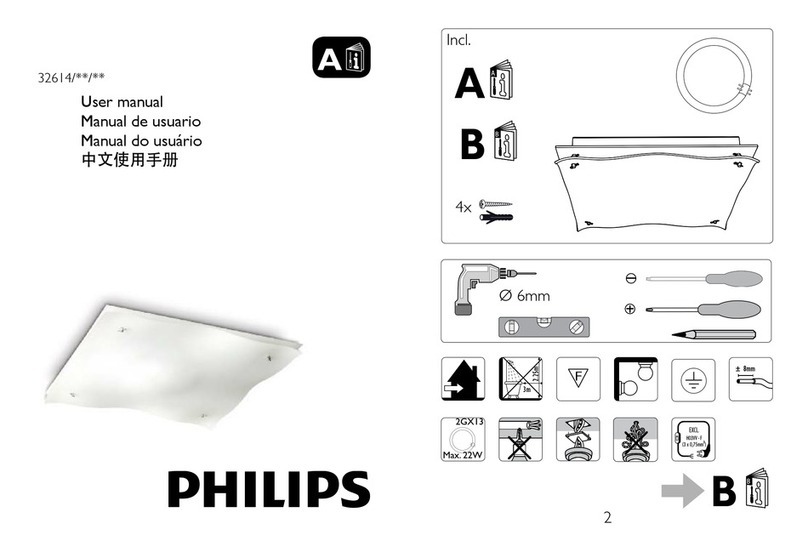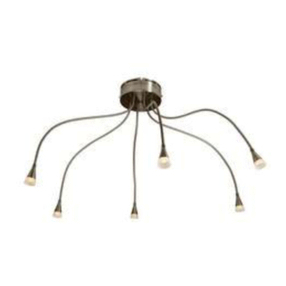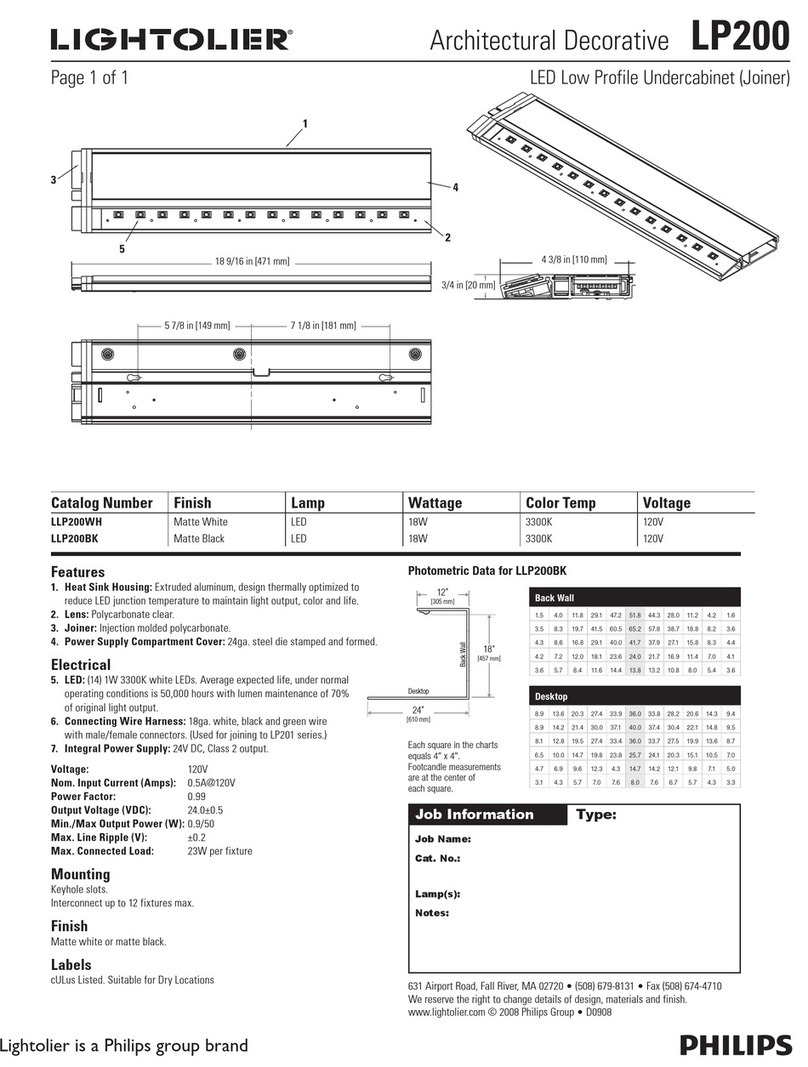
Montage- und Bedienungsanleitung
HINWEIS:
Diese Bedienungsanleitung erläutert die korrekte Verwendung des Produktes, um eine lange Lebensdauer zu gewährleisten. Lesen Sie diese
vor Inbetriebnahme der Solarleuchte. Bewahren Sie sie auf.
Die Entsorgung mit den Haushaltsabfällen ist ausdrücklich verboten. Alte Beleuchtungskörper können am Verkaufsort abgegeben werden.
BESCHREIBUNG:
Solarenergie - keine Verkabelung. Leicht zu montieren
schaltet sich automatisch ein/aus
die superhelle LED sorgt für helles Licht
wasserdicht
die Energie wird mit Hilfe der Solarzelle in der Akku-Batterie gespeichert
die Leuchtdauer kann je nach erfolgter Sonneneinstrahlung bis zu 8 Stunden betragen
FUNKTIONSWEISE:
Tagsüber verwandelt die Solarzelle die Sonnenenergie in Strom und lädt die Akku-Batterie auf. Bei Dunkelheit leuchtet das Licht, dank der
tagsüber in der Akku-Batterie gespeicherten Energie, automatisch auf.
Die Leistung der Solarzelle hängt von ihrer Position, den Wetterbedingungen, der jahreszeitlich bedingt unterschiedlichen Sonneneinstrahlung usw. ab.
Im Winter empfängt die Solarzelle weniger Sonnenenergie; ausserdem ist die Dauer der Sonneneinstrahlung im Winter kürzer.
LAGERUNGSEMPFEHLUNGEN:
Unbedingt die Ansammlung von Schmutz und Ablagerungen auf dem Produkt vermeiden, da hierdurch das Aufladen der Akku-Batterie
beeinträchtigt und die Lebensdauer der Akku-Batterie verkürzt wird was zu einer Funktionsstörung der Leuchte führen kann.
Die Fläche regelmässig mit einem weichen Tuch oder einem Kosmetiktuch reinigen. Die Solarleuchten können das ganze Jahr über im Freien bleiben, auch bei
Kälte. Wenn Sie Ihre Solarleuchte mehr als zwei oder drei Tage nach Innen holen möchten, so befolgen Sie die nachfolgend angeführten Punkte, um
Schäden an der Akku-Batterie zu vermeiden:
Bei Raumtemperatur in trockener Umgebung lagern.
Die Solarleuchte an einem Ort lagern, an dem sie täglich etwas Licht erreicht. Die Akku-Batterie benötigt ein wenig Licht, um während der
Lagerung etwas Ladung zu halten.
Für eine langfristige Lagerung müssen die Elemente einmal monatlich vollständig ent- und wieder aufgeladen werden. Entnehmen Sie alternativ
die Akku-Batterie und ersetzen Sie sie vor Inbetriebnahme der Leuchte durch eine neue. Die Akku-Batterie regelmässig im Laufe des Jahres
überprüfen und ersetzen.
Solarleuchten nicht in einer Schachtel oder im Dunkeln lagern, da dies zu Schäden an der Akku-Batterie führen kann und deren Fähigkeit
beeinträchtigt, die Ladung zu halten.
Um eine bessere Leistung der Solarleuchte zu gewährleisten, darf sie nicht langfristig gelagert werden.
INFORMATIONEN ÜBER HÄUFIGE PROBLEME
Wenn Ihre Solarleuchte nicht bei Einbruch der Nacht aufleuchtet, kann es hierfür folgende Gründe geben:
Die Batterie ist nicht aufgeladen oder muss ausgetauscht werden.
Vergewissern Sie sich, dass Ihre Solarleuchte sich an einer Stelle befindet, an der das Solarmodul täglich ein Maximum an Sonnenenergie erhält.
Lassen Sie die Batterie sich während eines ganzen Sonnentages aufladen. Ist der Himmel einen ganzen Tag lang bewölkt oder bedeckt, wird die
Batterie nicht aufgeladen, um nachts zu funktionieren. Die Solarleuchte benötigt täglich direkte Sonneneinstrahlung, um die Akku-Batterie zu
und normal funktionieren. Akku-Batterie regelmässig im Laufe des Jahres überprüfen und ersetzen, besonders nach dem Winter.
Akku-Batterien sind bei Einzelhändlern vor Ort erhältlich.
Weitere Lichtquellen: Wenn Ihre Solarleuchte zu nah an einer Strassenlaterne, an einer Durchgangsbeleuchtung oder einer anderen Solarleuchte
aufgestellt wird, kann es sein, dass sie nachts nicht automatisch aufleuchtet.
Verschmutzte Solarzelle: Wenn die Solarzelle verschmutzt ist, kann die Batterie nicht vollständig aufgeladen werden. Dies verkürzt die
Lebensdauer der Akku-Batterie und verursacht eine Funktionsstörung der Leuchte. Reinigen Sie die Solarzelle regelmässig mit einem weichen Tuch.
Nach Behebung des Problems, bei Einbrechen der Nacht oder in einem dunklen Raum prüfen, ob die Leuchte aufleuchtet. Wenn die Leuchte nur
kurz funktioniert, muss die Batterie wieder aufgeladen werden.
laden. Wenn die Solarleuchte während eines Tages nicht genügend Sonnenlicht empfängt, wird sie am nächsten sonnigen Tag wieder aufgeladen
Symbolerklärung
Entspricht den für das Produkt massgeblichen europäischen Bestimmungen.
Das Symbol mit der durchgestrichenen Abfalltonne bedeutet, dass das Produkt getrennt vom Haushaltsabfall entsorgt werden muss.
Das Produkt muss gem. der örtlichen Entsorgungsvorschriften der Wiederverwertung zugeführt werden.
Durch separate Entsorgung des Produkts tragen Sie zur Minderung des Verbrennungs-oder Deponieabfalls bei und reduzieren
eventuelle negative Einwirkungen auf die menschliche Gesundheit und die Umwelt.
D

